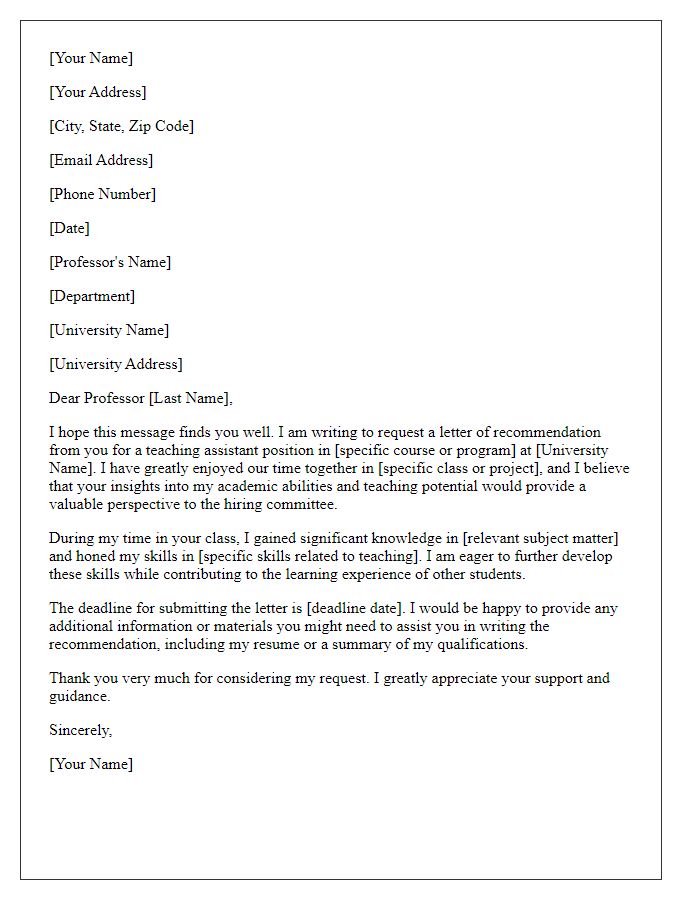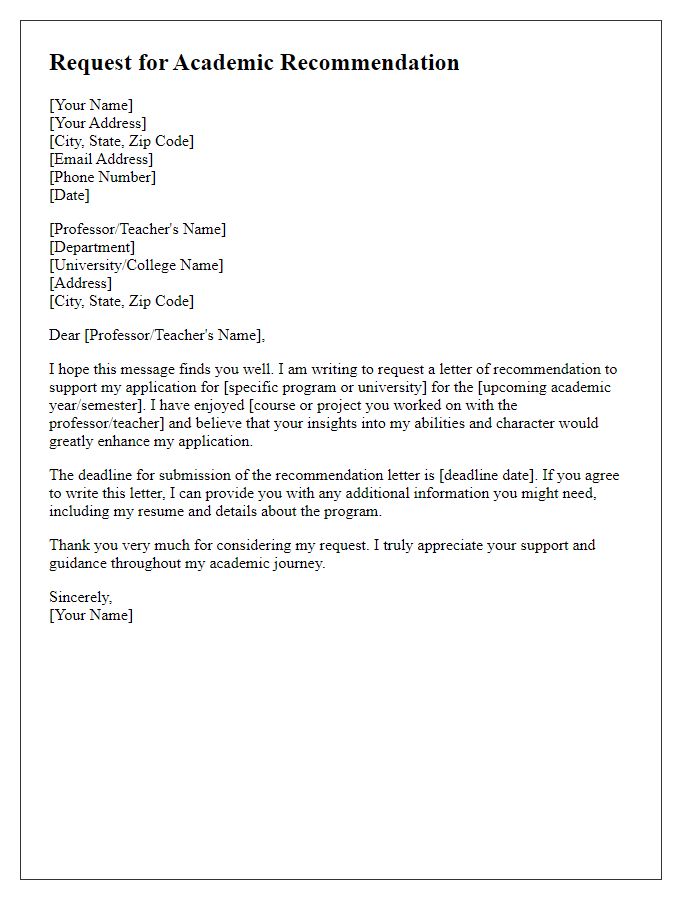Are you looking for the perfect academic recommendation letter template? Crafting a compelling request can make all the difference in securing a strong endorsement from your professor or advisor. In this article, we'll explore key elements to include in your letter, from a thoughtful introduction to specific achievements that highlight your strengths. So, if you're ready to learn how to create an impactful recommendation request, let's dive in!

Clear subject line
A well-structured academic recommendation request should include a concise subject line that clearly indicates the purpose of the email. This subject should state that it is a request for a recommendation and include relevant details such as the purpose (e.g., graduate school, scholarship application) and the recipient's name. For instance, using a subject line like "Request for Academic Recommendation for Graduate School - [Your Name]" provides immediate clarity to the recipient about the email's intent. Such specificity ensures the professor or advisor can easily identify your request among potentially numerous emails.
Personal salutation
In the realm of academic pursuits, crafting a compelling recommendation request can significantly impact one's future opportunities. A personal salutation, such as addressing a professor or academic advisor by their title and last name, adds a respectful tone to the request. For instance, writing "Dear Professor Smith" establishes a professional relationship. In this correspondence, it is essential to specify the program or scholarship being applied for, such as the Master's program in Environmental Science at Stanford University. Additionally, mentioning aspects like prior coursework or collaborative projects that underline the candidate's strengths can greatly enhance the context. Highlighting key experiences, such as participation in a research project that resulted in a published paper, further enriches the request, providing tangible evidence of the candidate's capabilities and work ethic. Overall, a well-structured request with a personal salutation sets the stage for a favorable academic recommendation.
Brief self-introduction
A well-crafted self-introduction is essential for setting the stage in an academic recommendation request. A typical introduction should include your name, your current academic status, such as undergraduate student at a reputable university, and your major, for instance, Environmental Science. Additionally, highlight significant experiences, like internships at non-profit organizations focused on sustainability or relevant volunteer work. Mention achievements, such as maintaining a GPA of 3.8 or participating in research projects related to climate change. This context helps the recommender understand your background and motivation for the request, establishing credibility and a personal connection.
Purpose of recommendation
An academic recommendation serves as a crucial endorsement from an educator or professor that highlights a student's qualifications, skills, and readiness for a specific opportunity, such as a graduate program or scholarship. These recommendations provide insight into the student's academic achievements, work ethic, and character. For instance, a recommendation might detail the student's performance in quantitative coursework, showcasing their ability to excel in challenging subjects like Advanced Calculus or Statistics. Additionally, it may highlight the student's participation in significant events, such as presenting research at conferences like the American Educational Research Association Annual Meeting. This context provides valuable information to admissions committees, enabling them to assess the student's fit for their program effectively.
Deadline and submission instructions
A well-crafted academic recommendation request should clearly state the purpose of the letter, provide relevant background information about the applicant, and offer specific details on deadline and submission instructions for the recommender. The applicant should include pertinent personal achievements, such as GPA or test scores, and relationships with the recommender, which help establish credibility. Important deadlines, such as application due dates (for example, November 1 for early decision) need to be explicitly mentioned, along with information on how the letter should be submitted, whether through an online portal, email, or traditional mail to institutions like Harvard University or Stanford University. Providing the specific format required, such as Word document or PDF, ensures that the recommender has clear guidelines. Additionally, including the recipient's contact information and any forms to accompany the letter adds further organization to the request.
Letter Template For Academic Recommendation Request Samples
Letter template of academic recommendation request for graduate school application

Letter template of academic recommendation request for scholarship consideration

Letter template of academic recommendation request for internship opportunity

Letter template of academic recommendation request for study abroad program

Letter template of academic recommendation request for professional development course

Letter template of academic recommendation request for teaching assistant position

Letter template of academic recommendation request for fellowship application

Letter template of academic recommendation request for research project involvement






Comments